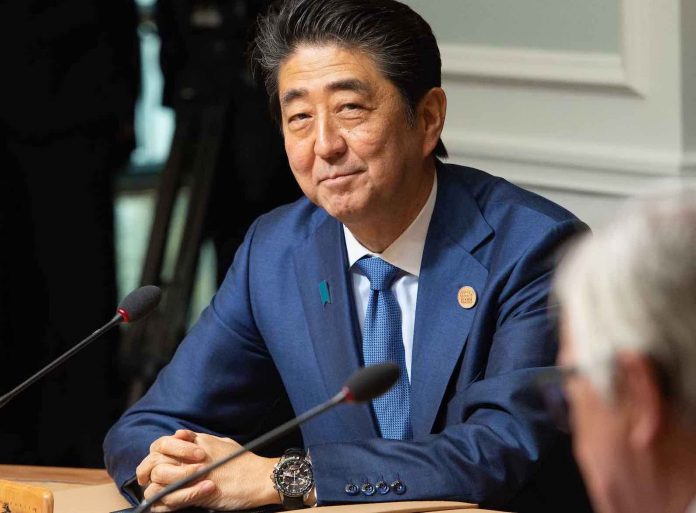Table of Contents
The state of emergency and lockdown is soon to be lifted in Japan due to a massive decrease in positive cases. The number of cases per day has come down from four-digits to mere dozens now. Everything will soon come to a normal, and it has come out as a surprise for the rest of the world. It is because Japan has witnessed so much improvement even though there were a pretty loose lockdown and lack of proper restrictions. Besides, people were moving around freely despite reports of new cases every day. So now the question arises about how Japan government overcame such a situation when most of the other countries are struggling despite strict regulations. During the last couple of months when the majority of the countries around the world went into total lockdown, Japan was still leading quite a normal life.
Everything from offices, restaurants, salons, to entertainment units, were kept open. Moreover, there were almost no restrictions on the movement of people from one place to another within the country. Besides, there was no deployment of any high technology apps that can track the movement of people. On top of everything, Japan does not even have a proper disease control center anywhere in the entire country.
On the contrary, the entire world was focusing on the number of coronavirus tests being conducted. Whereas, Japan has only conducted tests for a total of 0.2% of its entire population. Now, that is one of the lowest test rates if you list down the names of all developed countries based on these criteria. Despite all of these, the cases of deaths are now below 1000. It is the lowest in the list of top 10 most developed countries.
The pandemic scenario of Japan
Tokyo was listed as one of the densest centers of COVID-19 cases. According to the latest reports, less than 10 people are getting affected every day. Now, that is quite less in comparison to most of the other countries. Plus, even such low numbers are constantly decreasing, and that is a great sigh of relief for the Japanese people. Despite the flattening of the curve, there is still the risk of a second outbreak in Japan. However, the Japan government has lifted restrictions in most of the states, and Tokyo’s turn is also coming in the next few weeks.
According to news reports, the entire country will start functioning normally from the next Monday once again. Now the point of national conversation is how Japan made it possible. The fact that Japan has almost attained victory against such a pathogen with minimum restrictions is very surprising. Out of all the suggested assumptions about Japan, one thing has now become evident. It is that there is more than one strategy that Japan has applied to get rid of such a terrible situation. On the other hand, most of the other parts of the world are still struggling with no such magical strategy in hand.
Mikihito Tanaka, communication and science professor at Waseda University stated his opinion about this entire situation. He said that there is no doubt about the fact that Japan has proved itself successful in combatting the coronavirus. Tanaka is a member of the public advisory group too and says that experts are unable to crack the way of doing it the way Japan did. Recently, there was a long list that was made public for everyone. It consists of probable reasons that could have helped Japan come out successful in the war with the pathogen.
The probable measures by Japan government
As mentioned above, 43 probable causes are cited by the media. These consist of wearing masks, children not going to schools, low rates of obesity, and more. There are also some potentially funny assumptions in the media. One of the most controversial is that people speaking in Japanese emit lesser virus-laden droplets than others. There is an entire myriad of potential factors that have led to a positive outcome.
No one till now could come down to mention a particular policy package that Japan has adopted. Therefore, no other country is being able to reciprocate the policy for their betterment. However, if the other countries follow even probable measures, a lot of improvement is guaranteed in the upcoming few weeks. Every country’s government is now realizing the importance of rising to the occasion.
The importance of quick response
It has now become clearer that Japan’s immediate response to the pandemic has pulled them towards victory at present. While several officers in the Japan government are constantly criticizing Japan. The reason for such criticism is slow policy implementation. However, experts on the contrary are full of praises for the way Japan has handled the situation. What matters ultimately is the outcome and the country has proved its potential very well.
A special mention should be made about the contact tracing facility used by the country. It was there in action right from January when there was just one case of coronavirus. Additionally, Japan also utilized its massive advantage to handle the pandemic scenario. The advantage that Japan has over several other countries is its public health center facilities. Back in 2018, Japan government had taken a few major steps towards health development.
It employed 50,000-plus nurses in those public health departments. Now, most of these nurses have formal training in tracing infections. Before the pandemic, these nurses have a record of successfully handling severe tuberculosis cases and influenza infections. According to Kazuto Suzuki, professor of public policies at the Hokkaido University, Japan’s system is extremely analog. It is unlike Singapore’s app-base system, yet it is very useful.
It is an unfortunate comparison that we are drawing between Japan and a few other developed countries. For example, the U.S.A. and the U.K. are now trying to implement contact tracing. On the contrary, Japan had initiated the process much earlier when the virus had just started affecting people. The other two countries are trying to take these measures so that they can reopen their economies. Tracing experts mainly focused on public places such as hospitals and clubs. The situation can go out of control anytime here.
The burning car incident
The early reaction of the Japan government follows an unfortunate incident. the effects of the coronavirus first became public in February. It was after the Diamond Princess Cruise ship reached Japan with more than 100 people suffering from the infection. However, the good part was that experts in the country now understand a lot about the virus and its effects. All thanks go to the ship and its journey of course. The experts also got the information about the trend according to which the virus spreads. All these came to use later to educate the people of Japan about the dangerous scenario.
A different strain
Infectious sickness specialists additionally highlighted different determinants, with Shigeru Omi, the delegate leader of the master board exhorting the Japan government and a previous head of the WHO Western Pacific office, referring to Japanese individuals’ wellbeing awareness as potentially the most significant factor. The likelihood that the infection strain spreading in Japan may have been extraordinary, and less perilous, to that looked by different countries, has additionally been raised.
Huge inquiries despite everything stay over the genuine degree of the pathogen’s spread. In April, a Tokyo emergency clinic directed tests on a bunch of non-COVID patients and found that around 7% had the coronavirus, demonstrating the peril of missing asymptomatic or mellow bearers that can turn into the wellspring of an episode. An immune response test on 500 individuals in the capital recommended the genuine flare-up could be almost multiple times bigger than figures have appeared.
Simple measures when disease numbers are high, and reports of individuals unfit to get treatment is necessary. On the other hand, even clinical treatment for COVID-like indications peppered web-based social networking during the tallness of the episode. What’s more, the reality remains that Japan’s reaction was not exactly great. While the general population is a lot lesser, Asian neighbors, for example, Taiwan has only seven active cases from the infection, while Vietnam has none.
What is next?
If a more dangerous second wave hits Japan, the risk factor in the country remains quite high. The main reason is of course the huge population of one of the oldest countries in the world. The country although it has gone through a speedy recovery can get back into a serious condition soon. Therefore, there is news that Japan is trying to use powerful vaccines to keep immunity stronger. Besides, Japan should utilize this time to boost immunity and keep conducting more tests. It is something that the country should learn from other countries that suffered during MERS and SARS.









